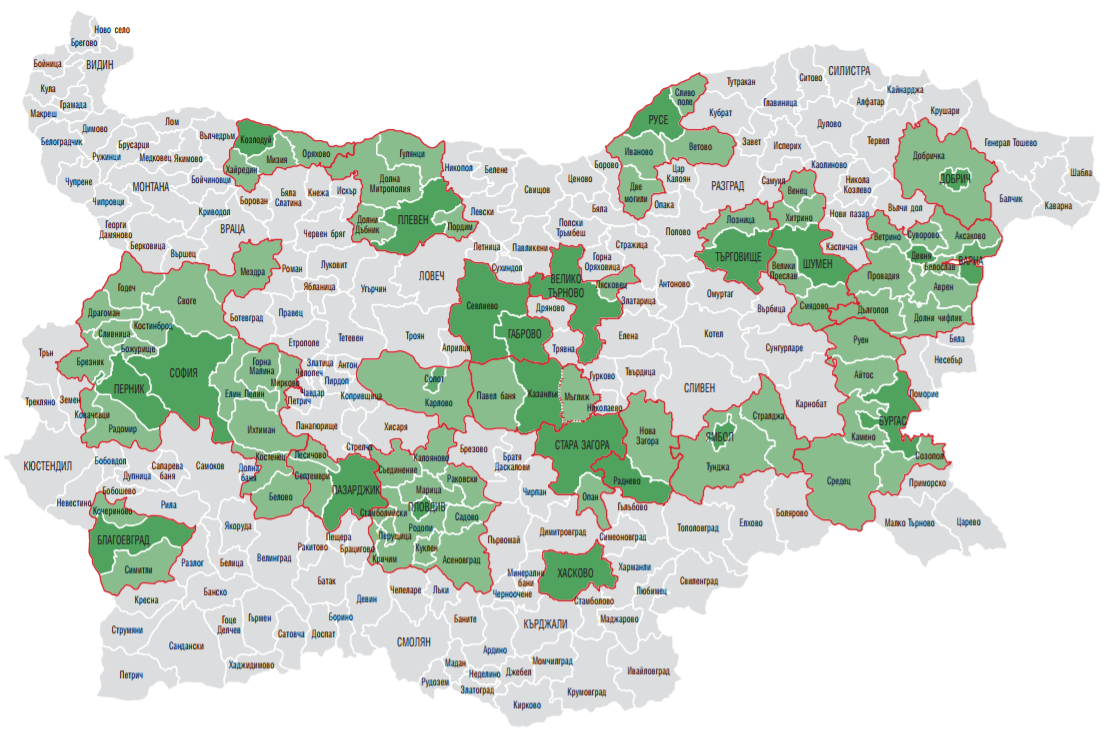How Do Economic Centers Influence the Development of Peripheral Municipalities?
| download full analysis [BG only] |
Is there convergence in the levels of economic development within the economic centres? This is the question that the Institute for market economics’ new study attempts to answer. It is based on the “Economic centres in Bulgaria” study, and aims at explaining the processes taking place within the individual centres. In the broadest sense, the study has three goals: to establish the fundamental differences in demographic and economic development between municipalities within and outside economic centres, to assess the potential for convergence in the levels of economic development within the individual economic centres, and finally to study whether such convergence is already taking place.
From the economic perspective, the study found that in the primary economic measures (production per capita, foreign direct investment and fixed assets expenditures, unemployment and salaries) municipalities in the periphery of economic centre resemble more those outside centres than their cores. In spite of that, the differences between peripheral municipalities and those outside centres are quite noticeable, which in turn means that there can be no doubts in the positive effects of the participation in economic centres on the peripheral municipalities.
As far as demography is concerned, the results of the study are much more ambiguous. Out of the main population dynamics indicators, a significant and unambiguous difference between municipalities in and out of economic centres can be seen only in mechanical growth. In municipalities outside of economic centres there are much more people permanently leaving compared to those settling in them; in the peripheries this ratio is lower, and in economic cores there are more people settling than ones leaving. This is a result of the possibility for daily committing from peripheral municipalities to a nearby economic core, where the better and better paying workplaces are located. In other words, the ability to commute daily to a nearby core means that people take the decision to move away permanently less frequently. This, in turn, keeps smaller and less economically developed settlements in the periphery of economic cores from depopulating. The very structure of the economies of the big groups of municipalities is different, primarily in the balance between agriculture, industry and high tech. While municipalities outside economic centres and those in the peripheries have a larger share of agriculture, most cores have and industrial profiles. High tech activities are almost exclusively located in the cores and are almost absent from other municipalities.
The assessment of the potential for convergence in the levels of economic development of municipalities met the IME analyst’s expectations. Municipalities who started the period between 2011 and 2015 from a lower level of economic development have been growing faster compared to those with better developed economies. It is interesting to note that this relationship is stronger for municipalities outside economic centres, compared to those in them.
When it comes to the convergence process, some economic centres do show convergence in the levels of economic development, i.e. a shortening of the distance between core and peripheral municipalities. This can be seen in the change of the standard deviation of production per capita and unemployment. In most centres there is a relatively even distribution of peripheral municipalities in groups that converge towards their respective cores and ones that lag behind. In other words, in many centres, especially larger ones, have two “tiers” of peripheral municipalities – one whose rate of economic development surpasses that of its core and is thus gradually approaching it, and one which is lagging behind.
The most optimistic result of the study is that in centres where the data allow for comparisons I the levels of household income, the average income in peripheral municipalities is approaching that of the cores. This is yet another confirmation that being a part of an economically strong centre provides a chance for faster development to economically weaker municipalities, and to better income of their population.
The complete analysis is available in Bulgarian.


